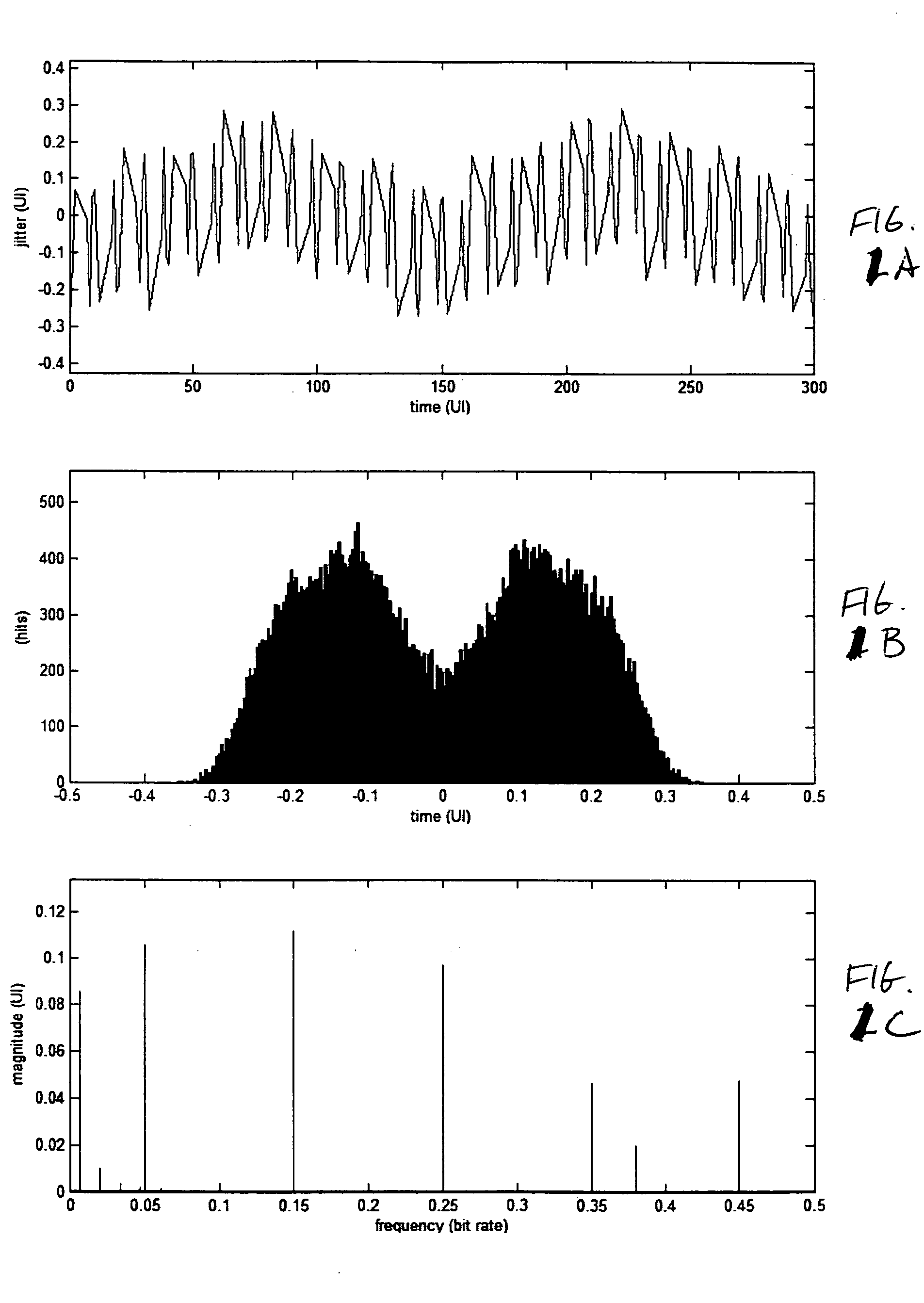Histograms, trends and spectrums of random and deterministic jitter
a random and deterministic jitter, trend and spectrum technology, applied in the direction of signal quality detector, error detection/prevention using signal quality detector, transmission monitoring, etc., can solve the problem of circuits that behave improperly, digital signals are unusable, and increase the bit error rate of a communication signal
- Summary
- Abstract
- Description
- Claims
- Application Information
AI Technical Summary
Problems solved by technology
Method used
Image
Examples
Embodiment Construction
[0018] Referring now to FIG. 2 using the spectrum approach as disclosed in the above-mentioned U.S. Pat. No. 6,832,172 (FIGS. 5 and 8) the jitter is separated spectrally into DDJ+DCD (12), PJ (14) and RJ (16). The prior art as exemplified by the above-mentioned U.S. Pat. No. 6,832,172 (FIG. 6) only provides a spectral display of the total jitter. However the present invention provides a spectral display (18, 20, 22) for each of the three separated jitter components. Each of the spectral components (12, 14, 16) is converted to the time domain by an inverse DFT function (24, 26, 28) to provide jitter versus unit interval data (30, 32, 34). From the jitter versus unit interval data, trend versus time plots (36, 38, 40) using edge times (ideal or measured), trend versus UI plots (42, 44, 46) using edge unit interval indices and histogram plots (48, 50, 52) may be displayed.
[0019] The PJ spectrum plot may be analyzed further to differentiate PJ components so that, by providing a time do...
PUM
 Login to View More
Login to View More Abstract
Description
Claims
Application Information
 Login to View More
Login to View More - R&D
- Intellectual Property
- Life Sciences
- Materials
- Tech Scout
- Unparalleled Data Quality
- Higher Quality Content
- 60% Fewer Hallucinations
Browse by: Latest US Patents, China's latest patents, Technical Efficacy Thesaurus, Application Domain, Technology Topic, Popular Technical Reports.
© 2025 PatSnap. All rights reserved.Legal|Privacy policy|Modern Slavery Act Transparency Statement|Sitemap|About US| Contact US: help@patsnap.com



